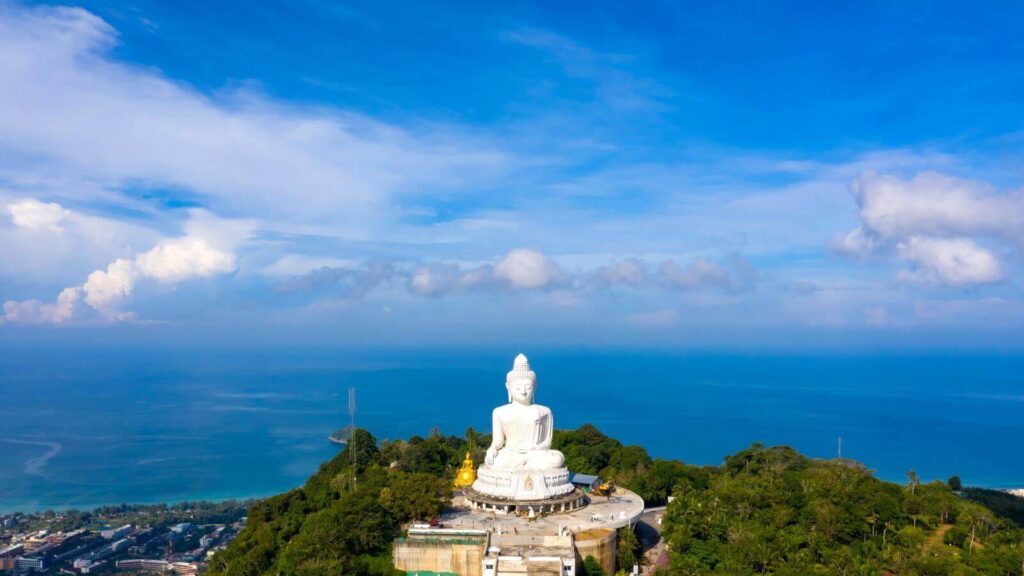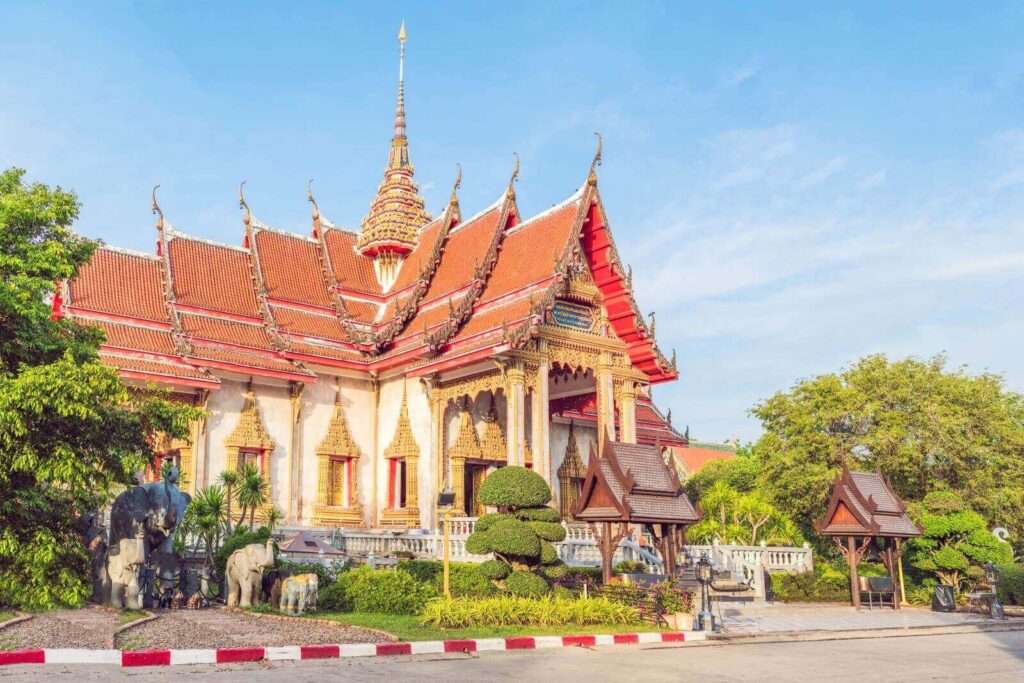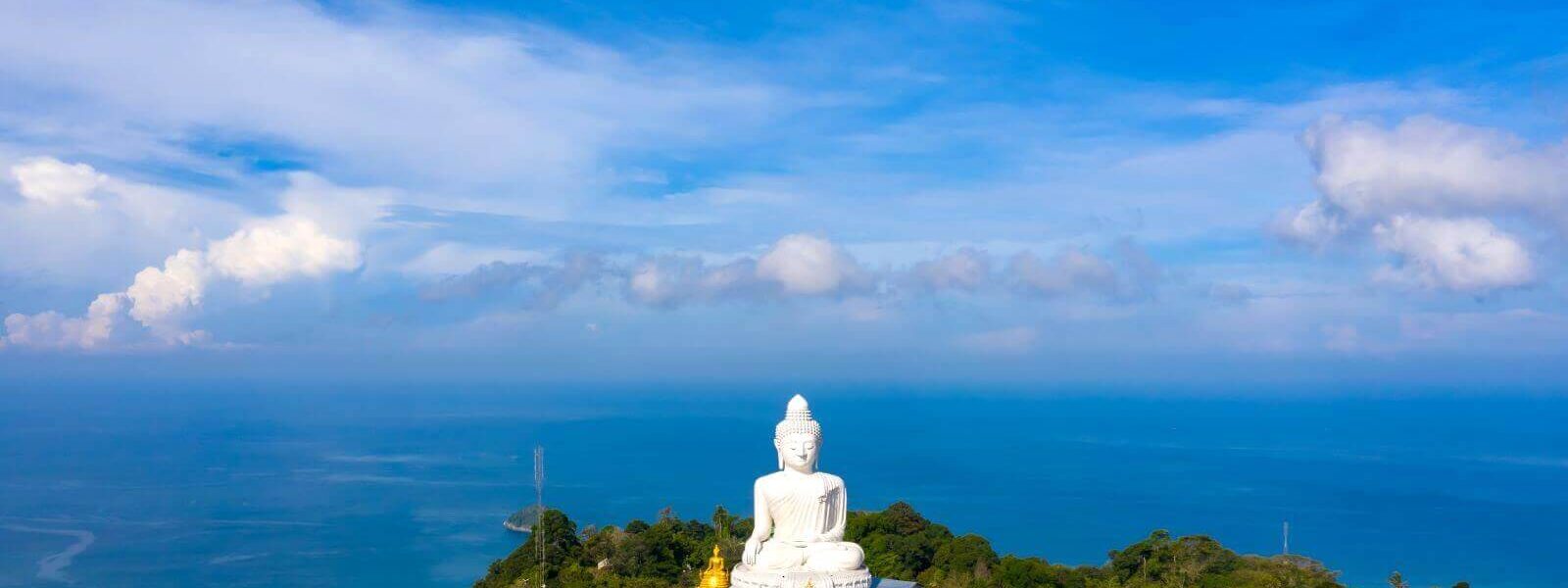The Andaman Coast in Thailand is known for its scenic beaches and tropical islands, but beyond the sand and sea, it offers a world of rich cultural heritage waiting to be discovered. The region’s ancient temples and local traditions offer travelers a glimpse into Thailand’s deeply rooted spirituality, customs, and way of life. Whether you’re a history enthusiast, a spiritual seeker, or a curious traveler, immersing yourself in Andaman’s cultural sites and rituals brings a whole new layer of meaning to your journey.
From majestic temples nestled in lush landscapes to vibrant cultural festivals that have been celebrated for centuries, Andaman’s cultural treasures invite you to step into the heart of Thai heritage. Let’s explore the key spots and traditions that make this region a cultural gem.

Phang Nga’s temples, traditions, and mindfulness practices offer travelers a true cultural immersion, where every moment invites reflection, connection, and the joy of discovery in Thailand’s Andaman Coast.
1. Discover Andaman’s Sacred Temples: A Journey Through Time and Tradition
One of the best ways to connect with the Andaman’s cultural roots is by visiting its ancient temples. Each temple holds unique stories, intricate architecture, and a serene atmosphere that makes it easy to experience the spiritual side of Thailand.
Start your journey with Wat Suwan Khuha, also known as the Cave Temple. Nestled in Phang Nga, this stunning temple sits within a large limestone cave and is home to a magnificent reclining Buddha statue. The mystical atmosphere is enhanced by stalactites and the soft light filtering through the cave’s openings. This unique setting makes Wat Suwan Khuha a place of worship and a natural wonder combined. Locals often visit to pay their respects, offer incense, and make wishes at the feet of the Buddha statue, making it a culturally immersive experience for visitors.
Another remarkable temple is Wat Chalong in Phuket. While it’s a bit further from the Andaman Coast, it’s worth the trip for those interested in Thai culture and history. This temple, one of the largest in Phuket, is known for its beautifully ornate structures and religious significance. Wat Chalong’s pagoda houses a splinter of bone believed to belong to the Buddha himself, drawing worshippers and tourists alike. The temple is decorated with vibrant paintings depicting Buddha’s life, and visitors are encouraged to light incense, make offerings, or simply soak in the peace of the sacred grounds.
Finally, Wat Tham Sua, or the Tiger Cave Temple in Krabi, is a must-see for its panoramic views and historical significance. To reach the temple’s peak, you’ll have to climb over 1,200 steps, but the reward is a breathtaking 360-degree view of Krabi’s lush landscape. Legend has it that a tiger once lived in the cave, giving the temple its name and adding an air of mystique. It’s a place for both physical endurance and spiritual reflection.
2. Engage in Local Traditions: Festivals, Ceremonies, and Cultural Practices
The Andaman region’s traditions come to life in its festivals, ceremonies, and everyday customs that reflect Thailand’s deep sense of community and spirituality. One of the best ways to experience local culture is to join in these celebrations and observe the practices that have been passed down through generations.
The Vegetarian Festival, also known as the Nine Emperor Gods Festival, is celebrated in Phuket and is one of Thailand’s most vibrant and intense festivals. Held annually in October, this nine-day event sees locals practicing a strict vegetarian diet as a form of spiritual cleansing. Devotees perform acts of self-mortification—like piercing their cheeks and walking on hot coals—as offerings to purify themselves and bring good fortune to the community. The festival includes colorful parades, traditional music, and ornate costumes. Observing or participating (in a more gentle form) offers an unforgettable experience of the region’s spiritual practices.
Another interesting tradition is the Loy Krathong festival, which takes place on the night of the full moon in November. During this celebration, locals create small floating baskets made from banana leaves, candles, and flowers, which they then release into rivers and the sea. The act of releasing the krathong symbolizes the letting go of past grievances and a hope for a brighter future. Watching the illuminated krathongs drifting on the water, surrounded by locals dressed in traditional attire, is a magical sight.
In addition to festivals, the Andaman Coast is also home to long-standing artisanal traditions, such as batik-making in Krabi. Batik is a traditional fabric-dyeing process that creates vibrant patterns on fabric. Several villages in Krabi offer workshops where you can learn the technique and create your own batik piece. Engaging in this art form provides insight into the creative aspect of local culture and a hands-on experience of Andaman’s crafts.
3. Embrace Andaman’s Spiritual Side: Meditation and Mindfulness Practices
Thailand’s Buddhist culture places a strong emphasis on meditation and mindfulness, and the Andaman region provides several opportunities for travelers to immerse themselves in these practices. Many temples and retreat centers offer meditation classes and retreats, allowing visitors to experience inner peace amidst the region’s natural beauty.
Phuket is home to several meditation centers, like Wat Suwan Khiri Khet, where you can join guided meditation sessions led by local monks. This temple, while lesser-known, provides a quiet atmosphere for learning meditation techniques and experiencing mindfulness in a traditional Thai setting. Participating in meditation at a temple, even for just a short session, offers a meaningful way to slow down, reconnect with yourself, and gain insight into Thai spirituality.
For those looking for a more in-depth experience, the Mindfulness Meditation Center in Phang Nga offers multi-day retreats focused on Buddhist meditation practices. These retreats are set in a tranquil environment surrounded by nature, allowing participants to disconnect from the fast pace of daily life and immerse themselves in meditation and self-reflection. During the retreats, visitors learn various techniques to cultivate mindfulness, compassion, and inner clarity—skills that they can take with them even after leaving Thailand.
Mindfulness practices are woven into daily life in the Andaman region, and joining a session or retreat provides a deeper understanding of how Thai people live with an awareness of the present moment, grounded in Buddhist teachings.

Final Thoughts: The Cultural Heartbeat of Andaman
Exploring the Andaman Coast isn’t just about stunning beaches and tropical landscapes; it’s also a journey into Thailand’s spiritual and cultural heritage. From majestic temples to lively festivals and peaceful meditation practices, the region offers countless ways to connect with its traditions and immerse yourself in the culture.
Visiting the temples, joining in local festivals, and embracing the region’s mindfulness practices allow travelers to experience Thailand’s spiritual richness beyond the usual tourist spots. The Andaman’s ancient traditions invite you to explore at a slower pace, reflect on your journey, and return home with more than just memories.
Whether you’re lighting a candle at Wat Tham Sua, floating a krathong during Loy Krathong, or learning the art of meditation, each experience adds a unique layer to your travels, making a visit to Andaman an unforgettable cultural immersion.

